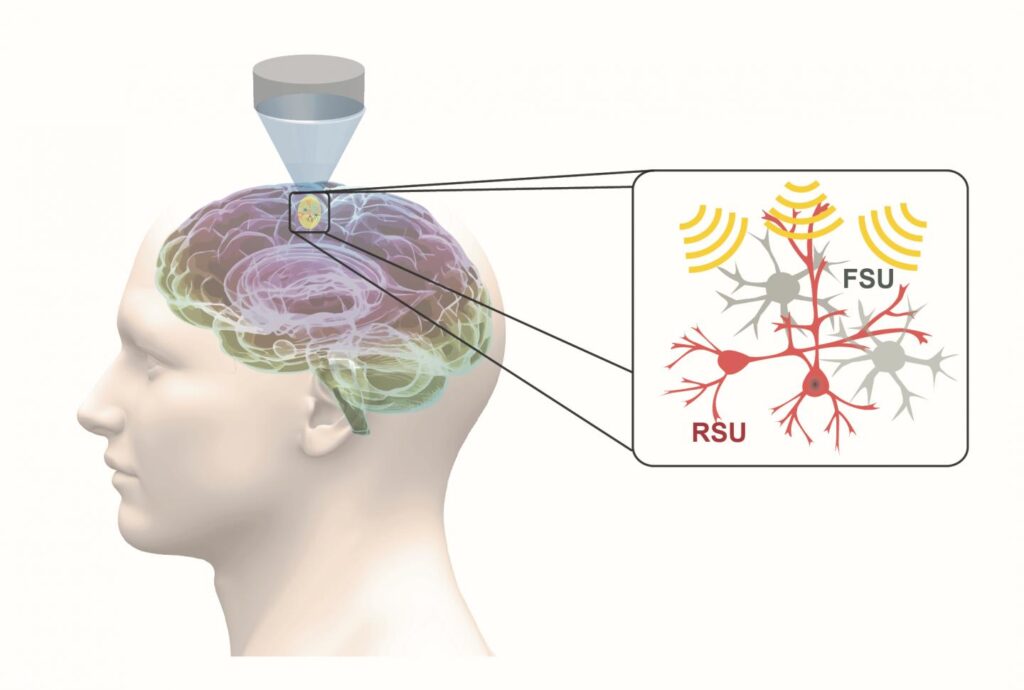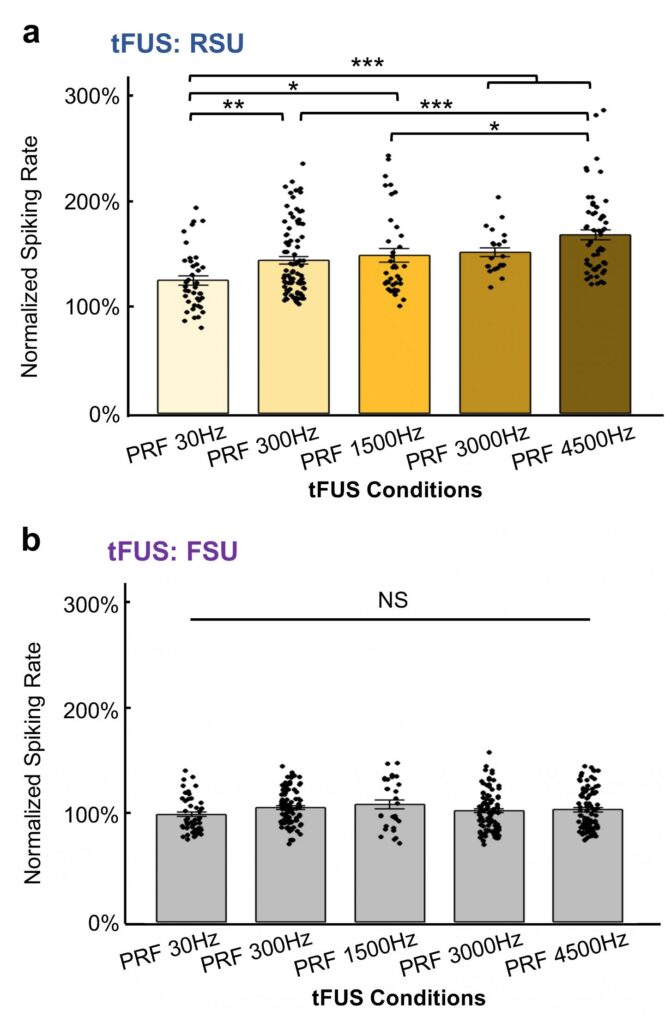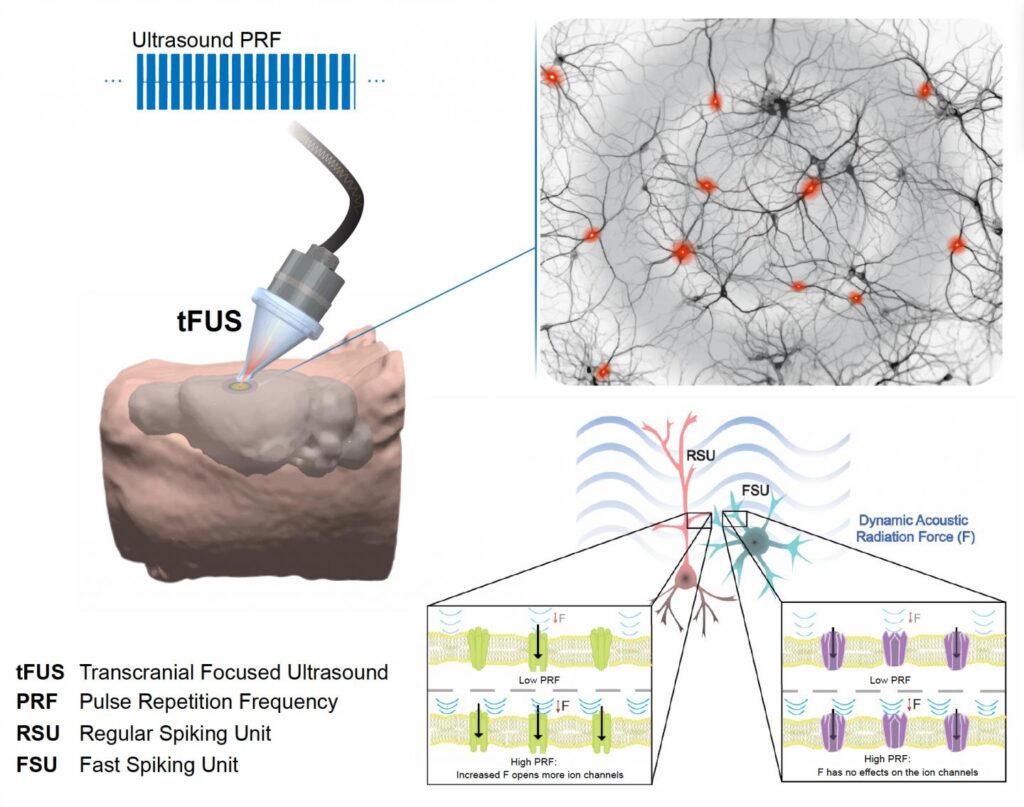Neuromodulation: How We Manipulate Brain Cells
Neuromodulation to treat illnesses has been limited by being too invasive or too general, but new research on ultrasound shows promise.
Researchers used ultrasound to alter the behavior of a specific type of brain cell. This process of altering the behavior of brain cells is called neuromodulation.
Why manipulate brain cells?
As the “control center” of our bodies, our brains are both important and vulnerable. Unlike the rest of the body, cells in the brain do not regularly divide and multiply to replace cells as they age, get damaged, or die. The brain is also surrounded by a special protective barrier that makes it difficult for medications to reach the brain. So when brain cells malfunction, it can cause severe symptoms that are difficult to treat.
Neuromodulation therapies are becoming popular to treat neurologic conditions. However, their use has been limited because they are either invasive or not specifically targeted. Invasive strategies allow highly specific placement, but they usually involve surgery, which comes with risks. Noninvasive strategies avoid the risks of surgery but are less specific. The results from this study show that it is possible to design neuromodulation therapies that are both specific and noninvasive. This is a promising step toward new therapies for conditions like Parkinson’s disease, epilepsy, chronic pain, and depression.


So what exactly is neuromodulation?
Neuromodulation is any treatment that alters the activity of neurons, a type of brain cell. It can be used to increase underactive neurons’ activity, or to “calm down” overactive neurons. You may recognize one of the oldest successful examples: cochlear implants for restoring hearing in certain deaf individuals. You may have even used a type of neuromodulation yourself—TENS units, which are used to manage pain, are now available over-the-counter at pharmacies.
Electrical energy, mechanical energy, and direct delivery of medications are all methods of neuromodulation. In this study, an ultrasound machine was used to deliver mechanical energy across the skull bone and into a specific area of the brain.


Different note, different neuron
Neurons, the brain cells that “fire” to transmit electrical signals, are the cells manipulated by neuromodulation therapy. There are several different types of neurons each with different shapes, sizes, and genetics. These differences give each neuron type unique firing behaviors. Engineers at Carnegie Mellon University wanted to test whether these differences between neurons affect the way they respond to ultrasound neuromodulation.
Two types of neurons were compared in this study: excitatory neurons and inhibitory neurons. Excitatory neurons typically have a regular firing pattern. When they send a signal, it “excites” (activates) the receiving cell. Inhibitory neurons typically have a fast firing pattern. When they send a signal, it “inhibits” (stops) the receiving cell from firing.
RELATED: Stress-Induced Sleep: A Built-In Snooze Button


The researchers tested how each of these neuron types responded to different frequencies of repeated ultrasound pulses. They recorded the spiking behaviors of the targeted neurons, using electrodes placed directly into the brains of anesthetized rats. Excitatory neurons increased their firing activity when high ultrasound pulse frequencies were used, but inhibitory neurons did not.
RELATED: How the Placebo Effect “Tricks” the Brain
To make sure the ultrasound neuromodulation therapy was responsible for the change in the neurons’ behavior, the researchers also tested rats in two control conditions. In one, the ultrasound was directed away from where responses were being recorded. In another, the researchers tested deaf rats to see if the audible sound of the ultrasound waves had an effect. In these control rats, the recorded neurons did not change their behavior, meaning that the ultrasound neuromodulation therapy was the source of the modified behavior.
RELATED: How Do Neurons Tell the Brain What is Familiar?
This study provides evidence that the unique size, shape, and other properties of different neurons influences how they respond to mechanical energy. The researchers hope to use this information to develop new ultrasound neuromodulation therapies for treating human neurologic conditions.
This study was published in the peer-reviewed journal Nature Communications.
RELATED: Brain Games Relieve Motion Sickness
Reference
Yu, K., Niu, X., Krook-Magnuson, E., & He, B. (2021). Intrinsic functional neuron-type selectivity of transcranial focused ultrasound neuromodulation. Nature Communications, 12, Article 2519. https://doi.org/10.1038/s41467-021-22743-7


About the Author
Emery Haley is a nonbinary cell biologist with a passion for diversity in STEM. They are currently a PhD student at Van Andel Institute Graduate School and are planning to pursue a career in science communication. Connect with them on Twitter @EmeryHaley2 and LinkedIn!




